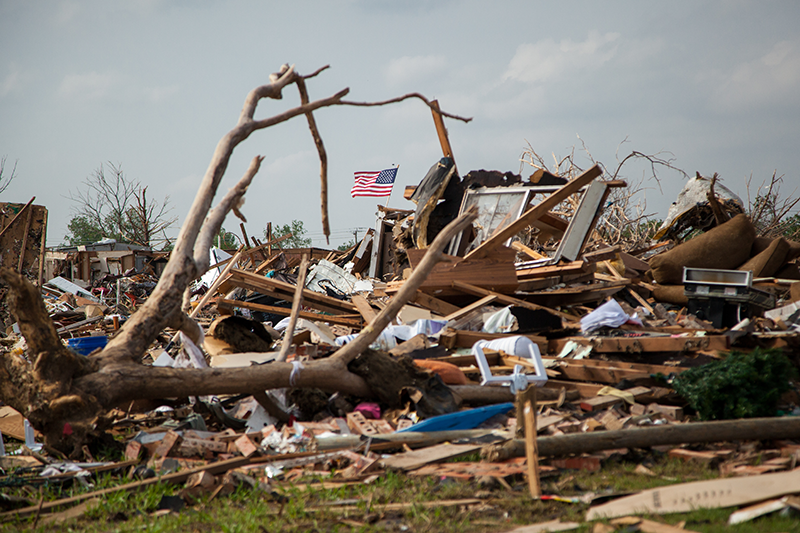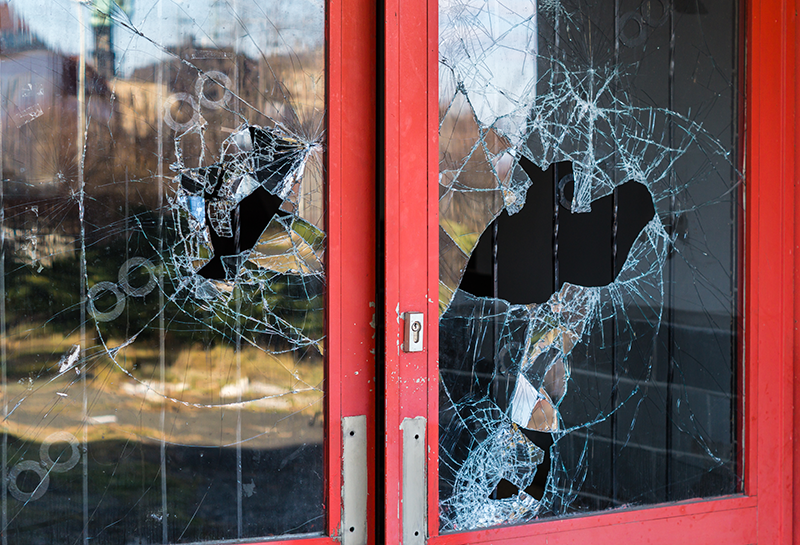Wind/Tornado

Following a significant windstorm, it is important to have your building professionally inspected for damage. The integrity of your building’s envelope or outer shell may have been significantly compromised in a manner which may not be clear to an untrained eye.
For example: The roof and siding may initially appear undamaged until closer inspection has taken place. Portions of the roof/siding may have separated and lifted during the storm allowing water to penetrate building cavities. The roof/siding may appear untouched after the wind dies down and the material has settled. However, the roof/siding membrane is often damaged, and the life expectancy of the material may be severely shortened. The window and door systems can also be damaged by wind. Even though glass is not shattered, it may be significantly scratched, window and door frames may be deflected, and seals broken. This may call for the repair or replacement of these systems.
If undetected, this type of damage may later cause problems when it is no longer possible to make a claim for recovery.
Water

For a water leak to be covered under the terms of most insurance policies, the event must be fortuitous or sudden and accidental in nature. Insurance coverage for damage resulting from a water leak is often denied when the insurance carrier takes the position that the water damage resulted from an ongoing problem that the property owner did not properly address.
Lack of maintenance may, in fact, not be the cause of the event. Important details may have been overlooked by the insurance company’s field adjuster in the initial inspection of the loss. At Guardian Adjusters, Inc., we are frequently able to help clients who have had their water claims initially denied by their insurance carrier. If you enter your business or residence to find that a water leak has occurred, it is imperative that you begin the mitigation process as soon as the leak is discovered. The source of the water must be identified and remedied. Dry out and temporary repairs should be performed by a licensed professional experienced in preventing further damage to the building and any affected personal property.
Many policyholders do not realize that they are required to preserve the damage so that all insurance company representatives may make a full inspection. It is important to note that more than one inspection is often necessary to finalize the claim. It may seem unreasonable to a property owner to be asked to keep what appears to be garbage, however, keeping damaged items is potentially important to the outcome of the claim. Accordingly, keep wet drywall sections, baseboards, cabinetry, flooring and any wet furniture or other personal items. A storage facility may be utilized if it is not possible to keep these items at the affected property.
Fire

When a building burns, the fire itself is not the only cause of damage to consider when assessing the damage. Smoke permeates the structure as well as the personal property inside the building. To extinguish the fire, the fire department often needs to break openings in the roof, ceilings, and walls or break down doors to access the fire. Water may pour into the building cavities, soaking the owner’s furnishings, personal effects, electronics, documents and equipment. Mold may develop as a sequel to the fire.
It takes a comprehensive investigation to determine the full extent of the damage after a fire. Not just the cosmetic result of a fire loss needs to be dealt with, but the full effect of the fire must be assessed in order that the insurance claim will result in a proper settlement.
Theft/Vandalism

When vandals or thieves willfully damage your property and steal your possessions, putting your life back in order can be a large undertaking. It can be a tremendous burden for a person who has just experienced such a trauma to prepare and document all the details necessary to pursue the subsequent insurance claim. We at Guardian Adjusters, Inc. stand ready to assist you with the process.
Notification: Before the scene is disturbed, file a police report. Without delay, notify your insurance agent or carrier of the loss. Documentation: As police collect evidence, numerous photographs of all aspects of the damage should be taken and copies retained by the property owner. This photo record needs to include damage to the structure, personal or business property, and any damage resulting from the police investigation itself. Begin making a list of any missing items.
Loss mitigation: Temporary repairs should be done that are enough to prevent further damage. The property must be secured, and all damage preserved so that the insurance company may make a full inspection of the loss. It is important that damaged items not be thrown away until the claim is settled.
Policy Compliance: It is imperative that policyholders become fully informed as to both the requirements and the benefits that are outlined in their policy. For example:
- A Sworn Statement in Proof of Loss may need to be filed within a stated timeframe.
- The insurance company may have the right to replace missing items rather than issue a settlement check to the insured.
- Receipts or verification of ownership for missing property may need to be produced if available.
Valuation and Negotiation: It is quite a chore to determine and document the value for missing and damaged items following a theft with vandalism. It stands to reason your insurance company will be able to respond best to a detailed, well-documented and professionally presented outline of your damages.
